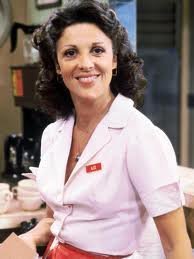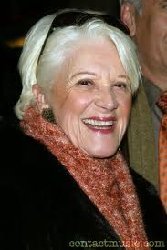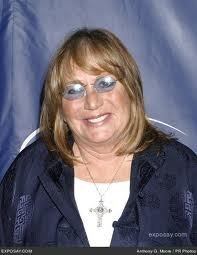The most ancient clowns have been found in the Fifth Dynasty of Egypt, around 2400 BC. Unlike court jesters, clowns have traditionally served a socio-religious and psychological role, and traditionally the roles of priest and clown have been held by the same persons. Peter Berger writes, "It seems plausible that folly and fools, like religion and magic, meet some deeply rooted needs in human society." For this reason, clowning is often considered an important part of training as a physical performance discipline, partly because tricky subject matter can be dealt with, but also because it requires a high level of risk and play in the performer.
In anthropology, the term clown has been extended to comparable jester or fool characters in non-Western cultures. A society in which such clowns have an important position are termed clown societies, and a clown character involved in a religious or ritual capacity is known as a ritual clown.
A Heyoka is an individual in Lakota and Dakota culture cultures who lives outside the constraints of normal cultural roles, playing the role of a backwards clown by doing everything in reverse. The Heyoka role is sometimes best filled by a Winkte.
Many native tribes have a history of clowning. The Canadian clowning method developed by Richard Pochinko and furthered by his former apprentice, Sue Morrison, combines European and Native American clowning techniques. In this tradition, masks are made of clay while the creator's eyes are closed. A mask is made for each direction of the medicine wheel. During this process, the clown creates a personal mythology that explores their personal experiences.
Modern clowns are strongly associated with the tradition of the circus clown, which developed out of earlier comedic roles in theater or Varieté shows during the 19th to mid 20th centuries. This recognizable character features outlandish costumes, distinctive makeup, colorful wigs, exaggerated footwear, and colorful clothing, with the style generally being designed to entertain large audiences.
The first mainstream clown role was portrayed by Joseph Grimaldi (who also created the traditional whiteface make-up design). In the early 1800s, he expanded the role of Clown in the harlequinade that formed part of British pantomimes, notably at the Theatre Royal, Drury Lane and the Sadler's Wells and Covent Garden theatres. He became so dominant on the London comic stage that harlequinade Clowns became known as "Joey", and both the nickname and Grimaldi's whiteface make-up design are still used by other clowns.
The comedy that clowns perform is usually in the role of a fool whose everyday actions and tasks become extraordinary—and for whom the ridiculous, for a short while, becomes ordinary. This style of comedy has a long history in many countries and cultures across the world. Some writers have argued that due to the widespread use of such comedy and its long history it is a need that is part of the human condition.
The clown character developed out of the zanni rustic fool characters of the early modern commedia dell'arte, which were themselves directly based on the rustic fool characters of ancient Greek and Roman theatre. Rustic buffoon characters in Classical Greek theater were known as sklêro-paiktês (from paizein: to play (like a child)) or deikeliktas, besides other generic terms for rustic or peasant. In Roman theater, a term for clown was fossor, literally digger; labourer.
The English word clown was first recorded c. 1560 (as clowne, cloyne) in the generic meaning rustic, boor, peasant. The origin of the word is uncertain, perhaps from a Scandinavian word cognate with clumsy. It is in this sense that Clown is used as the name of fool characters in Shakespeare's Othello and The Winter's Tale. The sense of clown as referring to a professional or habitual fool or jester developed soon after 1600, based on Elizabethan rustic fool characters such as Shakespeare's.
The harlequinade developed in England in the 17th century, inspired by Arlecchino and the commedia dell'arte. It was here that Clown came into use as the given name of a stock character. Originally a foil for Harlequin's slyness and adroit nature, Clown was a buffoon or bumpkin fool who resembled less a jester than a comical idiot. He was a lower class character dressed in tattered servants' garb.
The now-classical features of the clown character were developed in the early 1800s by Joseph Grimaldi, who played Clown in Charles Dibdin's 1800 pantomime Peter Wilkins: or Harlequin in the Flying World at Sadler's Wells Theatre, where Grimaldi built the character up into the central figure of the harlequinade.
The circus clown developed in the 19th century. The modern circus derives from Philip Astley's London riding school, which opened in 1768. Astley added a clown to his shows to amuse the spectators between equestrian sequences. American comedian George L. Fox became known for his clown role, directly inspired by Grimaldi, in the 1860s. Tom Belling senior (1843–1900) developed the red clown or Auguste (Dummer August) character c. 1870, acting as a foil for the more sophisticated white clown. Belling worked for Circus Renz in Vienna. Belling's costume became the template for the modern stock character of circus or children's clown, based on a lower class or hobo character, with red nose, white makeup around the eyes and mouth, and oversized clothes and shoes. The clown character as developed by the late 19th century is reflected in Ruggero Leoncavallo's 1892 opera Pagliacci (Clowns). Belling's Auguste character was further popularized by Nicolai Poliakoff's Coco in the 1920s to 1930s.
Tempting Turkey Tetrazzini
It's the day after Thanksgiving and your fridge is bursting with turkey leftovers. That's perfect, because our recipe for Tempting Turkey Tetrazzini calls for just that: leftover turkey! This easy casserole recipe is a simple way to use up leftovers and surprise people around the dinner table with something delicious. Just like Thanksgiving dinner, everyone will want "just one more bite" after their plates are clean.
- 12 ounces uncooked spaghetti
- 2 cups chicken broth
- 8 ounces fresh mushrooms, sliced
- 2 cups milk
- 3 tablespoons cornstarch
- 1/4 cup dry white wine or water
- 1/2 teaspoon salt
- 1/2 teaspoon black pepper
- 3 cups coarsely chopped cooked turkey breast (about 1 pound) (see Tip)
- 1/4 cup Italian-style bread crumbs
- Preheat oven to 375º. Coat a 9- x 13-inch baking dish with cooking spray. Cook spaghetti according to package directions; drain and set aside.
- Meanwhile, in a soup pot over medium-high heat, bring broth to a boil. Stir in mushrooms and cook 3 minutes. Stir in milk.
- In a small cup, combine cornstarch and wine, and stir until smooth; slowly pour into mushroom mixture and cook until slightly thickened, stirring constantly.
- Remove from heat and stir in salt, pepper, and turkey. Add spaghetti and toss until well coated. Spoon spaghetti mixture into baking dish and sprinkle evenly with bread crumbs.
- Bake 20 to 25 minutes, or until golden and bubbly.
National Grouch Day on October 15th sends out notices to all the grouches of the world to be their truest grouch. If you are a grouch, today is your special day. According to Sesame Street Magazine, the day celebrates all grouches and their way of life.
Sometimes grumps give backhanded compliments. “Your house looked horrible until you painted it.” Other times they don’t give them at all. Noise, silence, general activity makes a grouch generally unpleasant.
- a person who complains frequently or constantly
- a habitually irritable or complaining person
It seems that a grouch may be happy (although they would never admit it) only when others are unhappy and grouchy. It is then that they feel most comfortable with having others share in their grumpy, cantankerous, surly world with them.
This Sesame Street-inspired holiday has been celebrated since at least 1976 and celebrates the grouch’s way of life.
Grouch FAQ
Q. Who were some famous grouches?
A. Most famous grouches are fictional. They include names like Oscar the Grouch, Archie Bunker, and the Grinch.
Q. What word is the opposite of grouch?
A. A person who is a happy camper is someone who is generally joyful and satisfied.
















1 comment:
Good afternoon. I wish I saw the turkey tetrazzini recipe before I went to the grocery store. That will save the idea.
I remember when Lee Iacocca got money to keep Crisler going the phrase “Socialism for the rich, free enterprise for the poor.” Came into being.
The Duchess of York looks better in the more current picture- perhaps because of defined eyebrows?
Lydia
Post a Comment